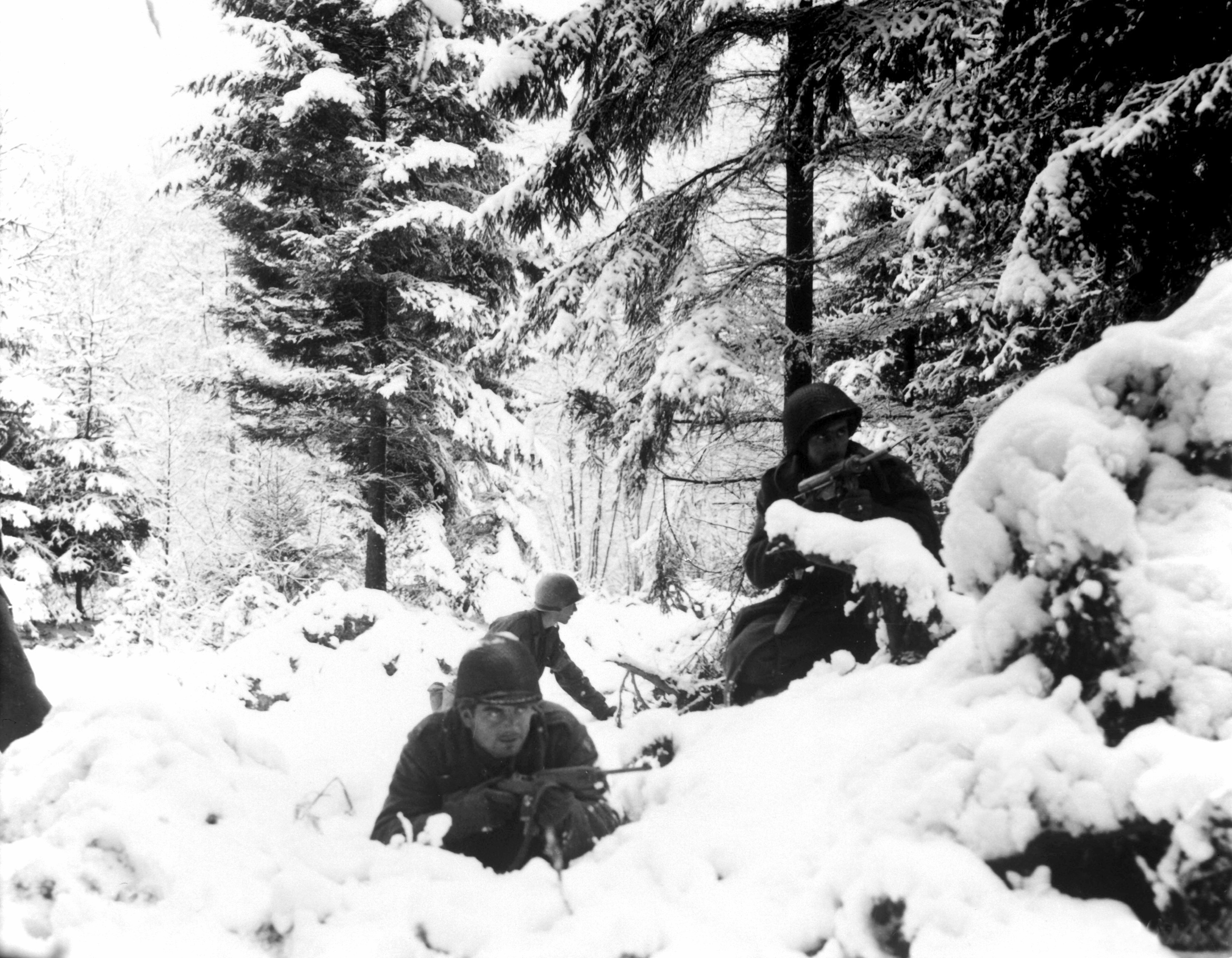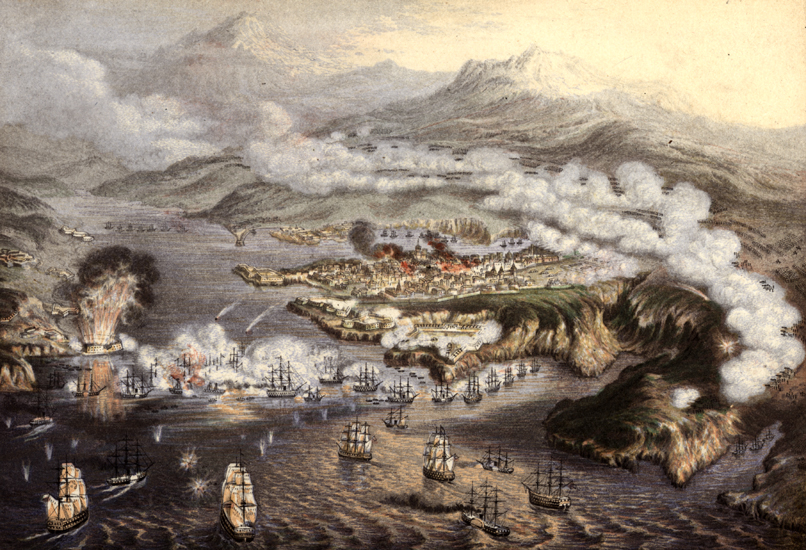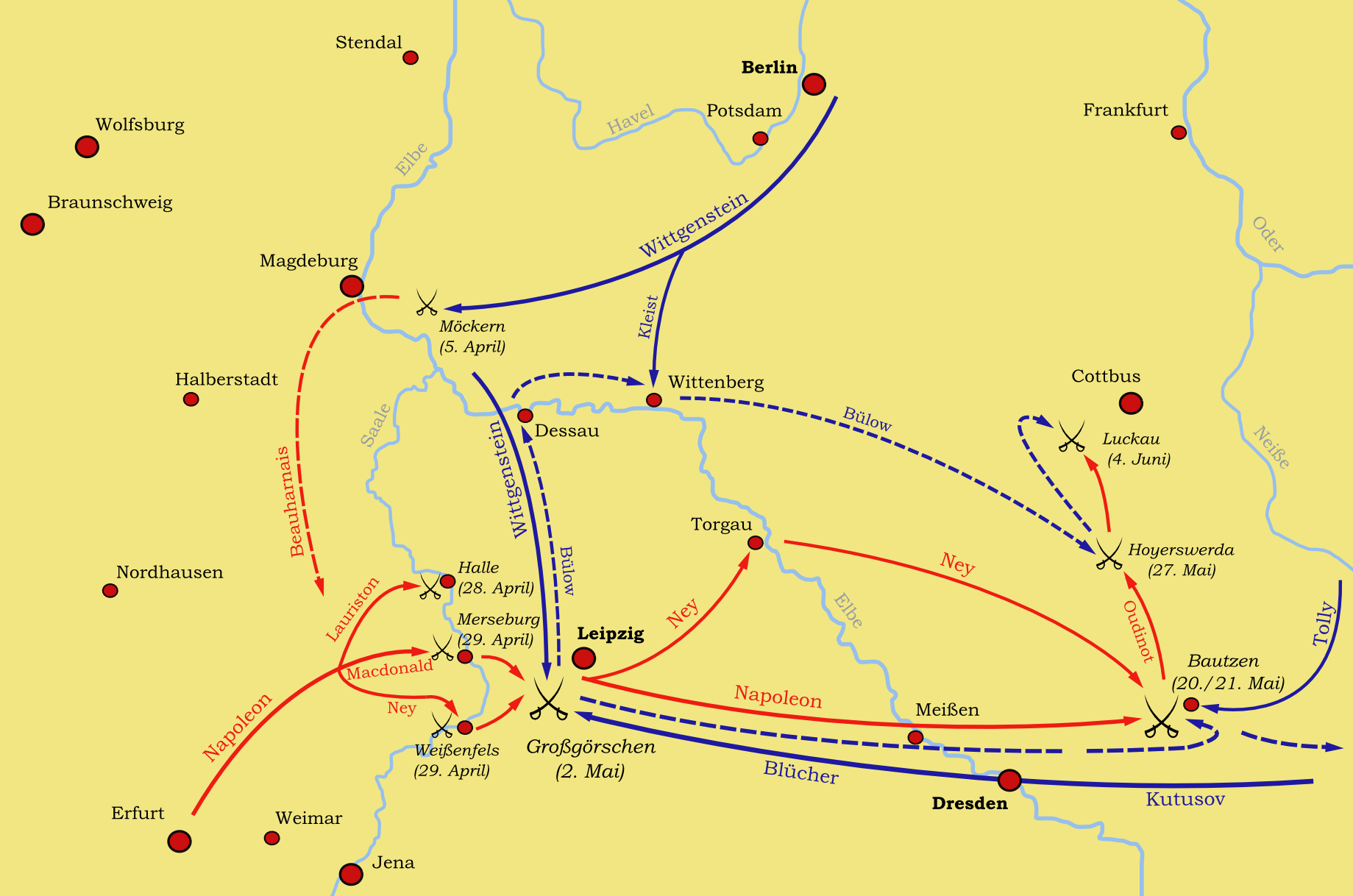|
1st Marine Artillery Regiment
The 1st Marine Artillery Regiment (french: 1er Régiment d'Artillerie de Marine, 1er RAMa) is one of the oldest marine artillery units in the military of France, as part of the troupes de marine within the French Army . History With two infantry marine regiments it formed the 2nd Brigade of the Blue Division during the Franco-Prussian War. Based in Laon since 1993, it is the artillery regiment of the 2nd Armoured Division. 1956 −1962: A detachment of the regiment participated in operations in Algeria. 1977: The regiment left Melun for the new garrison at Montlhéry. 1993: On 2 August the regiment took its new headquarters in Laon Couvron, a former air base. 1993 - 1996: The 1er RAMa sends detachments in Bosnia and Herzegovina, in the Rapid Reaction Force (RRF) (Serb bombardment of the batteries Mount Igman) during the bombing of Bosnia Herzegovina by NATO 1995ou of IFOR, in charge of enforcing the Dayton. 2009: The regiment received the first cannon CAESAR June 10 This gu ... [...More Info...] [...Related Items...] OR: [Wikipedia] [Google] [Baidu] |
France
France (), officially the French Republic ( ), is a country primarily located in Western Europe. It also comprises of Overseas France, overseas regions and territories in the Americas and the Atlantic Ocean, Atlantic, Pacific Ocean, Pacific and Indian Oceans. Its Metropolitan France, metropolitan area extends from the Rhine to the Atlantic Ocean and from the Mediterranean Sea to the English Channel and the North Sea; overseas territories include French Guiana in South America, Saint Pierre and Miquelon in the North Atlantic, the French West Indies, and many islands in Oceania and the Indian Ocean. Due to its several coastal territories, France has the largest exclusive economic zone in the world. France borders Belgium, Luxembourg, Germany, Switzerland, Monaco, Italy, Andorra, and Spain in continental Europe, as well as the Kingdom of the Netherlands, Netherlands, Suriname, and Brazil in the Americas via its overseas territories in French Guiana and Saint Martin (island), ... [...More Info...] [...Related Items...] OR: [Wikipedia] [Google] [Baidu] |
IFOR
The Implementation Force (IFOR) was a NATO-led multinational peace enforcement force in Bosnia and Herzegovina under a one-year mandate from 20 December 1995 to 20 December 1996 under the codename ''Operation Joint Endeavour''. Background NATO was responsible to the United Nations (UN) for carrying out the Dayton Peace Accords. The Dayton Peace Accords were started on 22 November 1995 by the presidents of Bosnia, Croatia, and Serbia, on behalf of Serbia and the Bosnian Serb Republic. The actual signing happened in Paris on 14 December 1995. The peace accords contained a General Framework Agreement and eleven supporting annexes with maps. The accords had three major goals: ending of hostilities, authorization of military and civilian program going into effect, and the establishment of a central Bosnian government while excluding individuals that serve sentences or under indictment by the International War Crimes Tribunals from taking part in the running of the government. IF ... [...More Info...] [...Related Items...] OR: [Wikipedia] [Google] [Baidu] |
Colmar Pocket
The Colmar Pocket (french: Poche de Colmar; de , Brückenkopf Elsass) was the area held in central Alsace, France, by the German Nineteenth Army from November 1944 to February 1945, against the U.S. 6th Army Group (6th AG) during World War II. It was formed when 6th AG liberated southern and northern Alsace and adjacent eastern Lorraine, but could not clear central Alsace. During Operation Nordwind in December 1944, the 19th Army attacked north out of the Pocket in support of other German forces attacking south from the Saar into northern Alsace. In late January and early February 1945, the French First Army (reinforced by the U.S. XXI Corps) cleared the Pocket of German forces. Background Formation of the Pocket A German bridgehead on the west bank of the Rhine long and deep was formed in November 1944 when the German defenses in the Vosges Mountains collapsed under the pressure of an offensive by the U.S. 6th Army Group. General Jean de Lattre de Tassigny's French First ... [...More Info...] [...Related Items...] OR: [Wikipedia] [Google] [Baidu] |
Garigliano
The Garigliano () is a river in central Italy. It forms at the confluence of the rivers Gari (also known as the Rapido) and Liri. Garigliano is actually a deformation of "Gari-Lirano" (which in Italian means something like "Gari from the Liri"). In ancient times the whole course of the Liri and Garigliano was known as the ''Liris''. For the most part of its length, the Garigliano River marks the border between the Italian regions of Lazio and Campania. In medieval times, the river (then known as the ''Verde'') marked the southern border of the Papal States. Historical significance Western Roman Emperor Majorian engaged a Vandal raiding party in Battle at Garigliano in 457 In the 9th and early 10th centuries, a band of Saracens established themselves on the banks of the Garigliano, from where they launched frequent raids on Campania and central Italy. In 915 a coalition of the pope, the Byzantines, Franks, Lombards, and Naples defeated the Garigliano Arabs in the Battle of G ... [...More Info...] [...Related Items...] OR: [Wikipedia] [Google] [Baidu] |
Second Battle Of El Alamein
The Second Battle of El Alamein (23 October – 11 November 1942) was a battle of the Second World War that took place near the Egyptian Railway station, railway halt of El Alamein. The First Battle of El Alamein and the Battle of Alam el Halfa had prevented the Axis powers, Axis from advancing further into Egypt. In August 1942, General (United Kingdom), General Claude Auchinleck had been relieved as Commander-in-Chief Middle East Command and his successor, Lieutenant-General William Gott was killed on his way to replace him as commander of the Eighth Army (United Kingdom), Eighth Army. Lieutenant-general (United Kingdom), Lieutenant-General Bernard Montgomery was appointed and led the Eighth Army offensive. The British victory was the beginning of the end of the Western Desert Campaign, eliminating the Axis threat to Egypt, the Suez Canal and the Middle Eastern and Persian oil fields. The battle revived the morale of the Allies, being the first big success against the Axis sin ... [...More Info...] [...Related Items...] OR: [Wikipedia] [Google] [Baidu] |
Battle Of Bir Hakeim
The Battle of Bir Hakeim () took place at Bir Hakeim, an oasis in the Libyan desert south and west of Tobruk, during the Battle of Gazala (26 May – 21 June 1942). The 1st Free French Brigade under Marie-Pierre Kœnig defended the position from against Axis forces of ''Panzerarmee Afrika'' commanded by Erwin Rommel. The captured Tobruk ten days later. The delay imposed on the Axis offensive by the defence of Bir Hakeim influenced the cancellation of Operation Herkules, the Axis invasion of Malta. Rommel invaded Egypt, slowed by British delaying actions until the First Battle of El Alamein in July, where the Axis advance was stopped. Both sides used the battle for propaganda, Winston Churchill declared the Free French to be the "Fighting French". Friedrich von Mellenthin wrote, Background Eighth Army At the beginning of 1942, after its defeat in western Cyrenaica during Unternehmen Theseus, the British Eighth Army under Lieutenant-General Neil Ritchie faced the Ax ... [...More Info...] [...Related Items...] OR: [Wikipedia] [Google] [Baidu] |
Battle Of The Somme
The Battle of the Somme ( French: Bataille de la Somme), also known as the Somme offensive, was a battle of the First World War fought by the armies of the British Empire and French Third Republic against the German Empire. It took place between 1 July and 18 November 1916 on both sides of the upper reaches of the Somme, a river in France. The battle was intended to hasten a victory for the Allies. More than three million men fought in the battle of whom one million were wounded or killed, making it one of the deadliest battles in human history. The French and British had committed themselves to an offensive on the Somme during the Chantilly Conference in December 1915. The Allies agreed upon a strategy of combined offensives against the Central Powers in 1916 by the French, Russian, British and Italian armies, with the Somme offensive as the Franco-British contribution. Initial plans called for the French army to undertake the main part of the Somme offensive, supported on ... [...More Info...] [...Related Items...] OR: [Wikipedia] [Google] [Baidu] |
Second Franco-Dahomean War
The Second Franco-Dahomean War, which raged from 1892 to 1894, was a major conflict between France, led by General Alfred-Amédée Dodds, and Dahomey under King Béhanzin. The French emerged triumphant and incorporated Dahomey into their growing colonial territory of French West Africa. Background In 1890, the Fon kingdom of Dahomey and the French Third Republic had gone to war in what was remembered as the First Franco-Dahomean War over the former's rights to certain territories, specifically those in the Ouémé Valley. The Fon ceased hostilities with the French after two military defeats, withdrawing their forces and signing a treaty conceding to all of France's demands. However, Dahomey remained a potent force in the area and quickly re-armed with modern weapons in anticipation of a second, decisive conflict. ''Casus belli'' After re-arming and regrouping, the Fon returned to raiding the Ouémé Valley, the same valley fought over in the first war with France. Vic ... [...More Info...] [...Related Items...] OR: [Wikipedia] [Google] [Baidu] |
Sino-French War
The Sino-French War (, french: Guerre franco-chinoise, vi, Chiến tranh Pháp-Thanh), also known as the Tonkin War and Tonquin War, was a limited conflict fought from August 1884 to April 1885. There was no declaration of war. The Chinese armies performed better than its List of Chinese wars and battles#Qing dynasty (1644–1912), other nineteenth-century wars and the war ended with French retreat on land and the momentum in China's favor. However lack of foreign support, French naval supremacy, and northern threats posed by Russia and Japan forced China to enter negotiations. China ceded its sphere of influence in Tonkin (northern Vietnam) to France and recognized all the French treaties with Annam (French protectorate), Annam turning it into a French protectorate. The war strengthened the dominance of Empress Dowager Cixi over the Chinese government, but brought down the government of Prime Minister Jules Ferry in Paris. Both sides ratified the Treaty of Tientsin (1885), Trea ... [...More Info...] [...Related Items...] OR: [Wikipedia] [Google] [Baidu] |
Siege Of Sevastopol (1854–1855)
The siege of Sevastopol (at the time called in English the siege of Sebastopol) lasted from October 1854 until September 1855, during the Crimean War. The allies ( French, Sardinian, Ottoman, and British) landed at Eupatoria on 14 September 1854, intending to make a triumphal march to Sevastopol, the capital of the Crimea, with 50,000 men. Major battles along the way were Alma (September 1854), Balaklava (October 1854), Inkerman (November 1854), Tchernaya (August 1855), Redan (September 1855), and, finally, Malakoff (September 1855). During the siege, the allied navy undertook six bombardments of the capital, on 17 October 1854; and on 9 April, 6 June, 17 June, 17 August, and 5 September 1855. The Siege of Sevastopol is one of the last classic sieges in history. The city of Sevastopol was the home of the Tsar's Black Sea Fleet, which threatened the Mediterranean. The Russian field army withdrew before the allies could encircle it. The siege was the culminating struggle fo ... [...More Info...] [...Related Items...] OR: [Wikipedia] [Google] [Baidu] |
Battle Of Lützen (1813)
In the Battle of Lützen (German: ''Schlacht von Großgörschen'', 2 May 1813), Napoleon I of France defeated an allied army of the Sixth Coalition. The Russian commander, Prince Peter Wittgenstein, attempting to forestall Napoleon's capture of Leipzig, attacked the French right wing near Lützen, Saxony-Anhalt, Germany, surprising Napoleon. Quickly recovering, he ordered a double envelopment of the allies. After a day of heavy fighting, the imminent encirclement of his army prompted Wittgenstein to retreat. Due to a shortage of cavalry, the French did not pursue. The next battle would be fought at Bautzen three weeks later. Prelude Following the disaster of French invasion of Russia in 1812, a new Coalition consisting of Britain, Sweden, Prussia and Russia formed against France. In response to this, Napoleon hastily assembled an army of just over 200,000 which included inexperienced recruits, troops from Spain and garrison battalions but was severely short of horses (a co ... [...More Info...] [...Related Items...] OR: [Wikipedia] [Google] [Baidu] |
CAESAR 863
Gaius Julius Caesar (; ; 12 July 100 BC – 15 March 44 BC), was a Roman general and statesman. A member of the First Triumvirate, Caesar led the Roman armies in the Gallic Wars before defeating his political rival Pompey in a civil war, and subsequently became dictator from 49 BC until his assassination in 44 BC. He played a critical role in the events that led to the demise of the Roman Republic and the rise of the Roman Empire. In 60 BC, Caesar, Crassus and Pompey formed the First Triumvirate, an informal political alliance that dominated Roman politics for several years. Their attempts to amass power as were opposed by the within the Roman Senate, among them Cato the Younger with the frequent support of Cicero. Caesar rose to become one of the most powerful politicians in the Roman Republic through a string of military victories in the Gallic Wars, completed by 51 BC, which greatly extended Roman territory. During this time he both invaded Britain and built a br ... [...More Info...] [...Related Items...] OR: [Wikipedia] [Google] [Baidu] |









